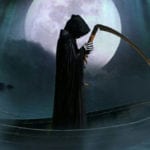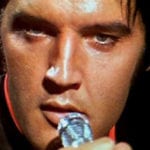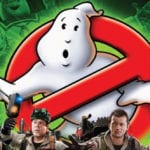 Weird Stuff
Weird Stuff  Weird Stuff
Weird Stuff  History
History 10 Times Trickery Won Battles
 Technology
Technology 10 Awesome Upgrades to Common Household Items
 Misconceptions
Misconceptions 10 Hilarious (and Totally Wrong) Misconceptions About Childbirth
 Weird Stuff
Weird Stuff 10 Warning Labels That Exist Because Someone Actually Tried It
 Health
Health Ten Confounding New Inventions from the World of Biomedicine
 Creepy
Creepy 10 Death Superstitions That Will Give You the Creeps
 Movies and TV
Movies and TV 10 Movies That Get Elite Jobs Right, According to Experts
 Weird Stuff
Weird Stuff 10 Times Real Laws Were Based on Bizarre Hypotheticals
 Animals
Animals 10 Inspiring Tales of Horses Being Human
 Weird Stuff
Weird Stuff 10 Typos That Accidentally Changed History
 History
History 10 Times Trickery Won Battles
 Technology
Technology 10 Awesome Upgrades to Common Household Items
Who's Behind Listverse?

Jamie Frater
Head Editor
Jamie founded Listverse due to an insatiable desire to share fascinating, obscure, and bizarre facts. He has been a guest speaker on numerous national radio and television stations and is a five time published author.
More About Us Misconceptions
Misconceptions 10 Hilarious (and Totally Wrong) Misconceptions About Childbirth
 Weird Stuff
Weird Stuff 10 Warning Labels That Exist Because Someone Actually Tried It
 Health
Health Ten Confounding New Inventions from the World of Biomedicine
 Creepy
Creepy 10 Death Superstitions That Will Give You the Creeps
 Movies and TV
Movies and TV 10 Movies That Get Elite Jobs Right, According to Experts
 Weird Stuff
Weird Stuff 10 Times Real Laws Were Based on Bizarre Hypotheticals
 Animals
Animals 10 Inspiring Tales of Horses Being Human
Top 10 Strange Original Versions of Famous Songs
For the thousands of songs the world hears, millions go unlisted. Musicians can often save time from songwriting to shift through the cultural detritus of unknown records. Be it sampling or covers, that process created the following 10 iconic songs. Though lesser known, the original versions have their own fascinating, and frequently, weirder histories.
10 Musicians And Performers Beloved By Dictators
10 The Tetris Theme
Tetris is a bunch of squares falling in a line. It is the most straightforward video game of all time. There is no room for anything scandalous. Yet, “A Theme,” the 80’s arcade earworm is a classic example of Russian nihilism.
Long before the Game Boy, the maddening theme song originated in an 1861 poem by Nikolay Nekrasov. “Korobeiniki,” titled after the Russian word for “peddler”, builds momentum until it crescendos to a tragic loss. The toetapper’s basic outline is two Russian merchants fall in love while selling their wares. They consummate their new relationship with a one-night stand. The man, now self-assured that he found the right suiter, plans to propose to the woman. While returning to his new future, he encounters a thief who robs and kills him. Game Over.[1]
9 “Turkey in the Straw”
Few people realize how many times they have heard the traditional British song “The Old Rose Tree.” The omnipresent song serves as the central melody for nursey rhymes, “Do Your Ears Hang Low” and “Turkey in the Straw.” Hank Williams bemoaned his doomed relationship in “Why Don’t You Love Me” over a sample of the English staple. Rapper Jibbs even charted in the Top 10 when he interpolated it on 2006’s “Chain Hang Low”. For children everywhere, the instrumental loop announces incoming ice cream trucks. The only version you don’t hear is the one that started it all. There is a good reason for that.
In the late 1820s, the “Zip Coon” was one of the most notorious individuals in minstrel shows. A cosmopolitan counterpart to the infamous caricature Jim Crow, the blackface character mocked free black man with exaggerated verbiage and gawdy outfits. In 1834, the derogatory representation was immortalized in the song “Old Zip Coon.” Decades later, “Turkey in the Straw” removed the offensive text for a more digestible tale of whacky poultry. That version is responsible for the limitless proliferation in popular consciousness.[2]
8 The James Bond Theme
An agent’s silhouette slithers into a gun barrel. He quick draws one shot causing a red filter to drip like blood. Bombastic horns blare out, cuing the introduction of the world’s greatest spy. The iconic opening montage of Dr. No and subsequent James Bond films would not work if the background track was not as suave and seductive as its protagonist. The original song carried a license to kill, but in a far less sexy way.
The theme music was initially used for a musical adaptation of VS Naipaul’s novel A House For Mr. Biswas. One of the songs Monty Norman composed, “Bad Sign, Good Sign” details Mr. Biswas plight. Because he was bound to the story’s plot, the original lyrics were:
I was born with this unlucky sneeze
And what is worse I came into the world the wrong way round
Pundits all agree I am the reason why
My father fell into the village pond and drowned.
When the play failed, Norman stored the song for later use. Film scorer John Barry suggested Norman give his piece a jazzy arrangement and drop the lines about fatal boogers.[3]
7 “Whatta Man”
Salt-N-Pepa were brazen showstoppers never afraid of inviting controversy with shocking lyrics. “Whatta Man’s” buoyant display of lasciviousness is no exception. However, the raucous rager also serves as a subtle political salute to a forgotten trailblazer that was even more transgressive.
After opening for powerhouses like James Brown and Ike &Tina Turner, Linda Lyndell seemed destined to be the next big act on the soul circuit. Otis Redding, moved by her full-throated range, encouraged her to sign with Stax Records. She recorded two singles in 1968, “Bring Your Love Back to Me” and, the eventually sampled, “What a Man.”
Her promising career came crashing down after mighty, mighty bad men in the Ku Klux Klan led boycotts to stop her sales. The important thing to note was the Linda Lyndell was Caucasian. Hatemongers did not approve of her consorting with majority black audiences. Black crowds had their own reservations over a white woman co-opting black sound. Forced into retirement after her lone record pressing, Lyndell languished in obscurity for 30 years. Once Salt-N-Pepa and En Vogue revitalized her catalog, the city of Memphis invited Lyndell to give her first concert in decades.[4]
6 “It’s All in the Game”
Only two noble prize recipients have writing credit on a number one hit. As one of the greatest songwriters in American history, Bob Dylan is an obvious candidate. The other, Charles Dawes, is more inexplicable.
A self-taught composer, Dawes possessed many talents. In 1912, Dawes sketched out a piano composition called Melody in A Major. In 1951, Carl Sigman added lyrics to the piece turning it into “It’s All in the Game.” R&B crooner Tommy Edwards’ 1958 version sat at number one for six weeks. Between Melody in A Major’s inception and Edward’s performance, the world drastically changed. A great deal of that can be linked to Charles Dawes.
Dawes rose to political prominence following his service in World War I. Rising in ranks to brigadier general, his tenure at the United States War Department drew the attention of Republican politicians. In 1924, Calvin Coolidge nominated Dawes to serve as his Vice President. A year later, Dawes won the Noble Peace Prize for his economic program, the Dawes Plan. At the time, the Dawes plan was reluctantly adopted to relieve Germany’s post-war debts. Its legacy has only grown more controversial. The Dawes Plan stabilized Germany’s economy by injecting loans dependent on American banks. When the world economy crashed during the Great Depression, the investments were so entangled with foreign governments that Germany could not recover. The resulting political instability collapsed the Weimar Republic. The Macarena may be annoying, but at least its authors did not help Adolf Hitler rise to power.[5]
10 Rocking Facts About Bands From The Golden Age Of Music
5 “I Want Candy”
The Strangeloves had hits before they existed. In 1963, producers Bob Feldman, Jerry Goldstein, and Richard Gottehrer lucked into penning a number one song when The Angel’s recorded “My Boyfriend’s Back.” To continue their success, they created an alter ego group, the Strangeloves.
In the early days of the British Invasion, Feldman noticed audiences clamored for foreign bands. He figured the more foreign, the more popular. Convincing his fellow producers to don faux zebra fur and African spears, the newly formed group adopted the fictional persona of a family of experimental Australian sheep farmers financing their musical aspirations by inventing a new breed, the long-haired “Gottehrer.” The absurd backstory did not exactly move albums, but it allowed them to write the garage rock stomper, “I Want Candy.”
Both the Strangeloves and “I Want Candy” have had quite the after-life. Though the band flamed out rather quickly, all members left for continued music careers. As one of the cofounders of Sire Records, Richard Gottehrer played a key role launching influential acts like Blondie, Madonna, The Ramones, Talking Heads, and The Go-Go’s. Appropriately, the New Wave sound Gottehrer shepherded into the mainstream ensured The Strangloves’ legacy. Bow Wow Wow’s incandescent version remains a perennial Halloween playlist favorite. Thankfully, Aaron Carter’s version is never heard outside of Lizzie McGuire reruns.[6]
4 “Get Together”
It is no surprise that the guy who wrote “The National Hippie Anthem” smoked pot. Chet Powers, a burly carnival employee, did not intend to distill his age’s zeitgeist. He just wanted to get laid. A year before she became Andy Warhol’s bohemian muse, Edie Sedgwick had a short-lived fling with Powers. He transported his fleeting courtship into a universal expression of love.
His carnie background led to a series of petty crimes culminating in a two-year stint in Folsom Prison for marijuana possession. To raise money for his legal fees, Powers sold record manager Frank Werber the publishing rights to “Let’s Get Together.” Powers lost out on millions of potential royalties.
After shortening the name, Werber gave the song to folk outfit Kingston Trio to middling success. Desperate to follow up their surprise hit, “You Were on My Mind,” Werber tried again with another act he signed, We Five. Signe Toly Anderson, inspired by the We Five, convinced her band, Jefferson Airplane, to record a cover for their 1966 debut album. That was how Jesse Colin Young eventually discovered the song. Along with his band the Youngbloods, he released the drippy call for peace in 1967. The song is so sixties that it initially only hit #62. If you’ve heard the song they sing, it was because the National Conference of Christians and Jews used the song for a public service announcement for unity in 1969. The spot revitalized interest in the Youngblood’s version. The song recharted into the top 10 and became the go to needle drop for the Summer of Love’s idealism.[7]
3 “Down Under”
The Wiggles are probably the band least expected to be indirectly responsible for killing two people. As the celebrity guests on the quiz show Spick and Specks, host Adam Hill posed a question perfect for children entertainers, “What children’s song is contained in the song ‘Down Under’?” Despite being right in their wheelhouse, the group failed to come up with the correct answer, “Kookaburra.” What should have been, at most, a missed round of trivia spiraled into a strangely dark saga.
One of the people watching that night was the managing director of Larrikin Music, Norman Lurie. In 1990, he bought the rights to the folk song for $6,100. Written by humble school teacher Marion Sinclair, “Kookaburra” was conceived in a Church choir as a way to raise funds for a girls’ jamboree. Ignoring the wholesome origin, Lurie demanded Men At Work pay him millions in royalties.
Released in 1981, “Down Under” was an international smash, topping charts in multiple countries. After a contentious legal battle, the judge eventually ruled the plagiarized flute solo warranted a $100,000 penalty. Frontman Colin Hay insists the stress of the case contributed to his father’s death. Tragically, the flautist Greg Ham slipped into a cycle of depression and heroin after blaming himself for the whole debacle. At 58, Ham died from either a heart attack or possible overdose.[8]
2 “The Star-Spangled Banner”
All rise for the national anthem. Now, shake it down for the national anthem. The patriotic salute to America’s perseverance in the War of 1812 has become a political flashpoint in recent years. Commentators demand the piece be respected. However, the songs inception was far from solemn. It was the favorite of a bunch of bawdy drunks.
The biggest betrayal is that the song is not even American. The Anacreontic Society was a rowdy gentleman’s club that convened in London taverns in the late 18th century. The term is derived from the Greek poet Anacreon. To celebrate their namesake, the group composed the drinking song “To Anacreon in Heaven.” With lines like “and besides I’ll instruct you, like me, to intwine the Myrtle of Venus with Bacchus’ Vine,” the singalong was a call for unchecked debauchery of sex and booze. American colonist accompanied many pints of ale with their own renditions. The tune was on Francis Scott Key’s mind when he watched the rockets’ red glare at Fort McHenry.[9]
1 “The Best I Ever Had”
As of this writing, Drake has lodged more songs in the Top 10 than any other artist in Billboard Hot 100 history. The first song in that imperial reign was “The Best I Ever Had.” The central motif in Drake’s breakout swells courtesy of the string arrangement of Hamilton, Joe Frank and Reynolds’ “Fallin’ in Love.” It took such a circuitous route for the cheesy 70’s soft rockers to record their fluke chart-topper that by the time they did, their ungainly name no longer made sense.
In 1959, Sascha Burland scored an improbable top 40 hit with The Nutty Squirrel’s “Uh-Oh.” Shockingly, Burland could not pay the bill by pretending to be a jazz scatting rodent. He moonlit writing advertising jingles. Digestive aid company Alka-Seltzer asked Burland to compose a musical accompaniment for their commercial showcasing various torsos. The backing track was so popular that he released it as the standalone single, “No Matter What Shape (Your Stomach Is In)”. Session musicians were recruited to play under the impromptu name The T-Bones. Blindsided by the instrumentals runaway top 10 success, a band of low tier Liberty Records signees were commissioned to turn the T-Bones into a real band. This sham arrangement was made up of Dan Hamilton, Joe Frank Carollo, and Tommy Reynolds.
Hugh Heffner signed the act to the short-lived Playboy label. The American public was apparently reluctant to buy music from a pornography distributor, because the enterprise folded after only releasing a handful of songs. After Tommy Reynolds renounced his hedonistic lifestyle to become a preacher, the group replaced him with Alan Dennison. It was that configuration of recruits from singing rodent turn gas relief pitchman and a porno mag entrepreneur that helped launch the most popular musician of the 21st century.[10]
Top 10 Bizarre Musical Genres That You Need In Your Life








